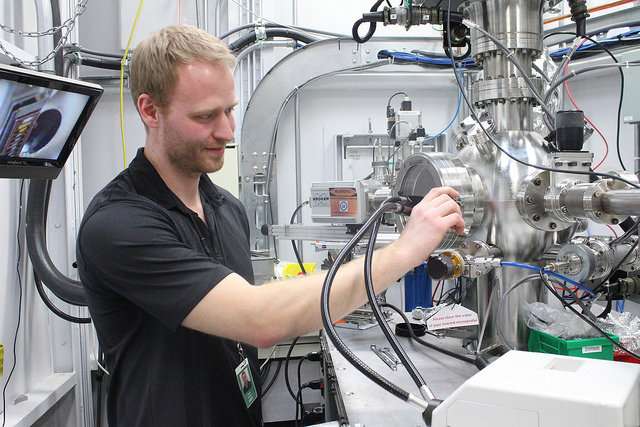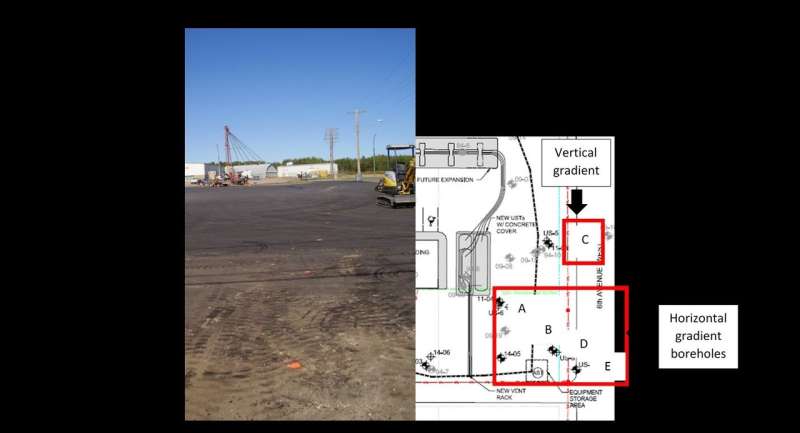Scientists explore how slow release fertilizer behaves in soil

Testing soil samples at the Canadian Light Source has helped a University of Saskatchewan soil scientist understand how tripolyphosphate (TPP), a slow release form of phosphorus fertilizer, works in the soil as a plant nutrient for much longer periods than previously thought.
Jordan Hamilton says the research also has implications for ongoing efforts by U of S soil scientists to use phosphorous-rich materials to clean up contaminated petroleum sites.
Hamilton, now a post-doctoral fellow working within U of S professor Derek Peak's Environmental Soil Chemistry group, had a chapter of his Ph.D. thesis, "Chemical speciation and fate of tripolyphosphate after application to a calcareous soil," published earlier this year in the online journal Geochemical Transactions.
TPP needs to break down into a simpler form of phosphate in order to be used as a nutrient by plants. In most types of soil, the belief was that TPP would break down right away, says Hamilton.
"I would definitely say the biggest surprise is how quickly the TPP adsorbed (attached itself) to mineral sources, especially in these calcium-rich soils," he said. "For the longer term, it was surprising to see it persist."
The study found that the adsorbed TPP species was present in the soil for up to a year. However, Hamilton's paper states that it's unclear how useful this fertilizer is over time, warranting further study to determine whether microbes in soil are capable of using this source of phosphorus from mineral surfaces.

"The main findings are that TPP can be mobile, depending on water volume and concentrations and can adsorb to mineral surfaces in soil," Hamilton explained. "We hope that microbes can come along and hydrolyze it as it is needed."
The practical implications for agriculture may come in finding ways to use these slow-release fertilizers within calcium-rich soils, such as those generally found in Saskatchewan, Hamilton says.
In Hamilton's project, TPP was injected into a phosphate-deficient subsurface soil at a bulk fuel facility in Meadow Lake which is the subject of ongoing U of S research into bioremediation of hydrocarbons in soil.
One of the conclusions in Hamilton's paper is that high concentrations of TPP in large volumes of water are required in order to make phosphorus available for bioremediation throughout a contaminated site such as the one at Meadow Lake. This is because the tendency of the TPP to be adsorbed by calcium-rich soil limits its mobility away from the injection site.
More information: Jordan G. Hamilton et al. Chemical speciation and fate of tripolyphosphate after application to a calcareous soil, Geochemical Transactions (2018). DOI: 10.1186/s12932-017-0046-z
Provided by Canadian Light Source




















